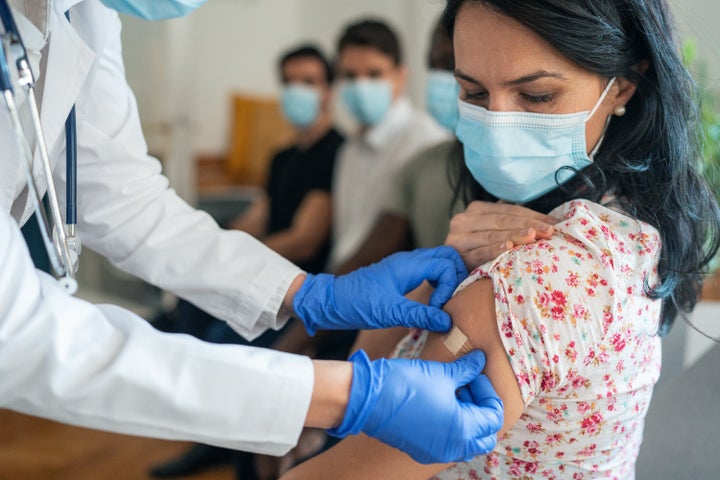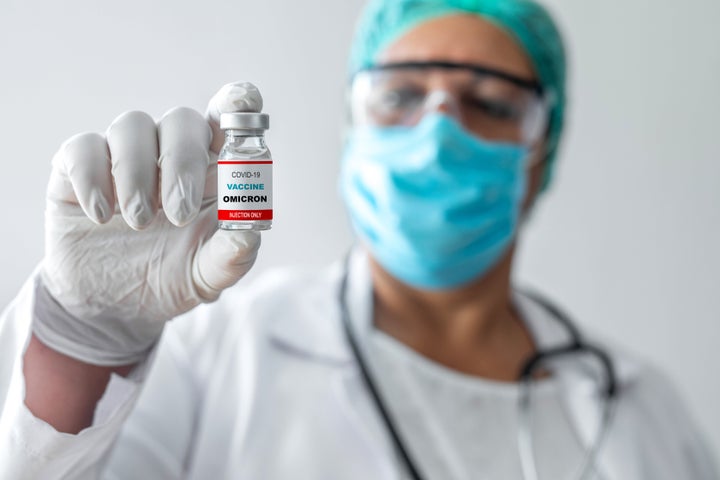
As of Sept. 1, the Centers for Disease Control and Prevention authorized an updated COVID-19 vaccine with the goal of fending off a surge in cases this fall and winter.
Moderna and Pfizer both have new bivalent vaccines that target the original strain of coronavirus and omicron subvariants (including the highly contagious BA.4 and BA.5), which have been rapidly spreading throughout the world for the last few months.
At this point, everyone 12 and over is eligible for the updated Pfizer booster, and those 18 and up are eligible for Moderna’s updated booster.
As with the last booster shot and the original vaccines, certain side effects are to be expected (and show that the booster is working!).
Here’s what to know about the side effects of these new bivalent vaccines.
The side effects resemble those of the earlier COVID shots.
“The anticipated side effects are really exactly what would be expected to occur after the previous vaccinations,” said Dr. William Schaffner, a professor of preventive medicine in the department of health policy at Vanderbilt University Medical Center.
Those include headache, fatigue and soreness or redness at the injection site, Schaffner explained. The CDC also notes that a fever is a common side effect after booster shots. Chills, muscle pain and joint pain were also reported, according to the Food and Drug Administration.
It’s important to remember that these side effects are actually a good thing.
Yvonne Maldonado, a pediatric infectious disease professor at Stanford University, previously told HuffPost that “most vaccines will have some degree of minor side effects. It is, in fact, the body’s immune and inflammatory response to the vaccine.”
This immune response can present itself as redness at the injection site, headache or fever, Maldonado said.
You can expect swollen lymph nodes, too — but don’t delay a mammogram because of it.
Swollen lymph nodes, particularly in the armpit of the arm where you got the shot, can be expected, too, according to Medical News Today. This is another side effect that was widely reported after previous COVID vaccinations and boosters. When the vaccine was first available, some people reported that this issue interfered with their mammograms — swollen lymph nodes can resemble a sign of breast cancer on this kind of screening.
Official guidance in 2021 said you should wait to schedule a mammogram after getting a COVID vaccine, but now, updated guidance states that “patients should not delay their screening mammogram because they were recently vaccinated,” according to a study published in the Radiological Society of North America’s journal.
If you have a mammogram scheduled soon after your COVID booster, just let your doctor know you were recently vaccinated so they’re aware of any potential issues with imaging.
If you experience these symptoms, you can take medicine to help relieve them.
Schaffner noted that if you’re experiencing any of these unpleasant symptoms, you can take a pain reliever like Tylenol to combat them. Over-the-counter anti-inflammatory drugs should make you feel better and allow you to go through your daily activities, he noted.
He added that if your pain or discomfort gets bad enough, you should contact your health care provider. But adverse reactions are very rare and occur in a few cases per million.
Plus, most severe reactions happen within 15 minutes of shot administration, which is why you’ll be asked to wait for 15 or 30 minutes after your booster so medical staff can monitor you.

Plan to take it easy the following day.
If you’re someone who has dealt with tiredness, fever or headache after getting vaccinated — or if you’re just feeling anxious about the potential side effects — plan to get your shot when you don’t have much going on the next day, Schaffner said.
In other words, if you’re nervous about side effects, you shouldn’t get the vaccine the day before a big event in case you end up feeling lousy.
All in all, it’s important to get the new COVID booster.
The most recent COVID subvariants are more contagious than ever and are only expected to grow more transmissible as the virus continues to mutate.
Dr. Gregory Poland, a professor of medicine and infectious diseases at the Mayo Clinic, previously told HuffPost that the goal of a virus is to infect more and more people. So, it will mutate to become more and more contagious — which is what we’re seeing with the BA.4 and BA.5 subvariants.
The best way to protect yourself from omicron, which is the current dominant strain, and any future subvariants is by getting this updated bivalent booster.
Experts are still learning about COVID-19. The information in this story is what was known or available as of publication, but guidance can change as scientists discover more about the virus. Please check the Centers for Disease Control and Prevention for the most updated recommendations.
Health - Latest - Google News
September 13, 2022 at 09:55PM
https://ift.tt/5XyG02M
The Most Common Side Effects Of The New Bivalent COVID Booster - HuffPost
Health - Latest - Google News
https://ift.tt/G31mbld
Bagikan Berita Ini














0 Response to "The Most Common Side Effects Of The New Bivalent COVID Booster - HuffPost"
Post a Comment